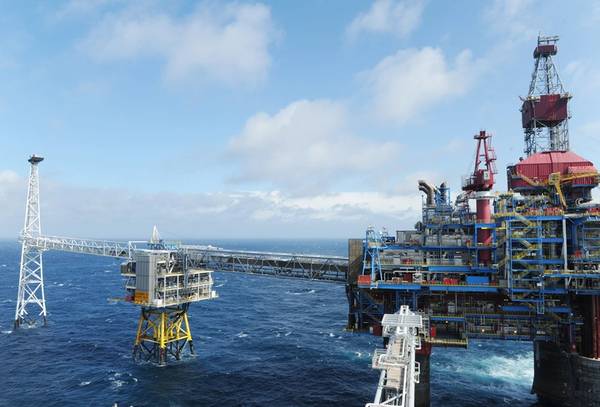
Partners in the Sleipner field will disclose datasets from the world's first offshore carbon capture and storage (CCS) plant, in a push to advance innovation and development on the field of carbon dioxide (CO2) storage, Norwegian energy company Equinor announced on Wednesday.
CCS began at Sleipner after CO2 tax was introduced, providing an economic incentive for storing CO2 instead of releasing it to the atmosphere.
Since 1996, the Sleipner field has been used as a CCS facility by Equinor as operator and a group of partnering companies, marking the longest ongoing CO2 storage project in the world. Each year about 1 million metric tons of CO2 from the natural gas is captured and stored at Sleipner in a saline formation 1 kilometer below the seabed. This has provided unique insight into what happens with carbon stored in the underground over longer periods of time.
"For over 20 years we have had a first-hand experience of safe storage of CO2 in a reservoir. We believe this insight can be valuable for both our industry, research communities, and others working on making CO2 storage a central part of the ongoing energy transition into the low carbon future," says Torbjørn F. Folgerø, chief digital officer and senior vice president in Equinor.
All data will be published via the SINTEF-led CO2 Data Share Consortium in September this year - a partnership supported by the Norwegian CLIMIT research program and the US Department of Energy.
Equinor has shared CO2 storage and monitoring data with the research community for the past 15 years. By making the data openly available, the Sleipner partnership and SINTEF seek to further advance both innovation and development in the field of carbon storage.
"Ever since Equinor shared the first Sleipner datasets, researchers across the world have used it to understand flow processes, enable more accurate predictions and develop methods for safe CO2 storage. Access to the Sleipner datasets can accelerate the development of knowledge and technologies essential for operating CO2 storage sites and enable faster deployment of CCS, a measure The Intergovernmental Panel on Climate Change (IPCC) states is critical to limit the global warming," says Eli Aamot, executive vice president in SINTEF.
A prototype for the data sharing will be available online for selected test users in June 2019. The digital platform for sharing CO2 storage data is planned to be online in September 2019.
The Sleipner area (blocks 15/6, 15/8 and 15/9) includes the Sleipner Øst, Gungne and Sleipner Vest gas and condensate fields. The Sleipner installations are also processing hydrocarbons from the tie-in fields Sigyn, Volve, Gudrun and from 2017 also rich gas from Gina Krog. Equinor's Sleipner licensee partners include ExxonMobil, LOTOS and KUFPEC.